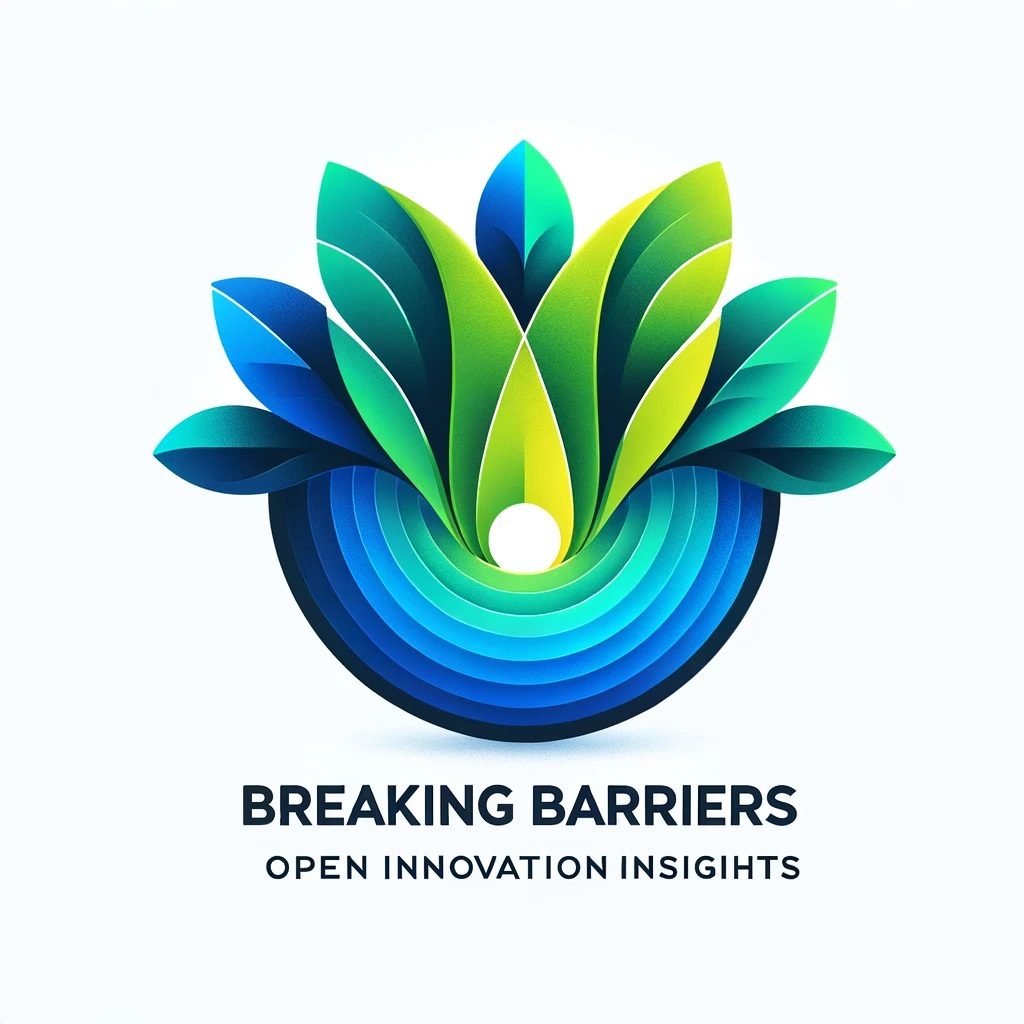In the ever-evolving world of healthcare, the pharmaceutical industry continually seeks to make strides in research and development (R&D) — a task extraordinarily fragile, costly, unpredictable, and growing ever more complex. One of the key inflection points in this journey is the integration of digital technologies – a future of Pharma R&D, replete with creativity and innovation through digital transformation.
Understanding Pharmaceutical Research and Development (R&D)
Pharmaceutical Research and Development (R&D) is a crucial arm of the healthcare industry. It is responsible for discovering, developing, and marketing new drugs. Its primary goal is not just to create drugs and medicines that can treat, prevent, or cure diseases; at its core, pharmaceutical R&D aims to enhance patients’ quality of life.
Processes typically involved in pharmaceutical R&D include target identification, preclinical research, clinical trials, FDA review, and post-market surveillance. It’s an extensive, time-consuming, and high-cost process involving rigorous testing to ensure safety and efficacy.
The Role of Digitization in Pharma R&D
For many years, digital innovations have presented opportunities to integrate digital technologies for more accurate data collection, faster analysis, and streamlined processes.
For instance, leveraging big data and analytics can lead to more nuanced and precise patient segmentation and clinical trials. On the other hand, Artificial Intelligence (AI) and Machine Learning (ML) can expedite drug discovery processes, complementing and even predicting drug interactions in silico before moving to the costly clinical trials stage. Workflow automations in labs enabled through the seamless integration of equipment to capture data automatically from experiments and then run analytics that used to take months can now be completed by the scientists in a very short time.
What to consider in approach to Pharma R&D Digitization
Though the potential is exponential, unlocking innovation through digitization in Pharma R&D depends on adherence to several creatively compelling and ethically using digital technology in R&D through disciplined industry-wide guidelines.
– Develop a strategic digital approach for the organization that’s not siloed and limited to R&D
This strategy should align with the organization’s mission, vision, and R&D objectives. Strengthening and constantly adapting the digital infrastructure in line with pharma R&D requirements is crucial.
– Lobbying for Advanced Technology Investment
Endorsing investments in groundbreaking technologies like AI, ML, blockchain, and the Internet of Things (IoT) can remarkably boost R&D productivity. For example, AI and ML can expedite drug discovery and development, while blockchain can enhance drug traceability. Further, the Internet of Things (IoT) can lead to real-time patient data collection innovations.
– No Compromise on Data Protection
Increasing data digitization brings along critical data security issues. Compliance with data security rules and substantial investment in foolproof cybersecurity systems are indispensable to safeguard sensitive patient and trial data from escalating cyber threats.
– Making Training and Skill Development a Priority
Transitioning to a digital setup in R&D necessitates reconfiguring skills in the workforce. This may involve training existing employees and recruiting new talents skilled in managing digital processes.
– Strategic Partnerships and Cross-Functional Corporation
Digitization isn’t an individual undertaking but requires cooperation. Strategic partnerships with tech startups, academia, or competitors are an excellent approach to achieving strategic digital goals established earlier. Cross-pollination of knowledge from various domains, not necessarily just from and within R&D, is crucial to enabling learning and infusing creativity for digital innovation.
Ultimately, digitization introduces a more economical, prompt, and accurate approach to pharmaceutical R&D. However, it also entails re-evaluating conventional methods to drug discovery and development, necessitating anchorage in digital best practices.

Emergence of AI and Machine Learning in R&D
Artificial Intelligence (AI) and Machine Learning (ML) have emerged as dominant driving forces in the digital transformation of pharmaceutical R&D. These technologies lay the groundwork for informed decision-making, the formulation of intelligent drug discovery algorithms, and the prediction of drug safety and efficacy. Pharma giants like Pfizer are exploiting the potential of AI in drug discovery, transitioning from traditional empirical procedures to AI-enabled predictive models to provide efficiency in the process.
AI can efficiently parse vast data, identifying patterns that may otherwise evade human detection. Its usefulness extends to forecasting how different genetic sequences and mutation variations could influence the progression of certain diseases. Conversely, Machine Learning algorithms are adept at interpreting and reading complex clinical and biological data. They identify patterns and predictive variables, leading to more accurate and effective treatments.
Big Data Contribution to R&D
Big Data refers to vast data sets that must be analyzed to reveal patterns, trends, and associations relating to human behavior and interactions. In pharmaceutical R&D, big data comes from numerous sources, including clinical trials, electronic health records (EHRs), genomics research, and more. With big data in pharmaceutical R&D, researchers can clarify and predict patient behaviors, recognize the risks associated with certain drugs, and enhance clinical trial designs.
This practice significantly reduces the time and cost associated with patient recruitment for trials and contributes to faster drug development.
IoT, Cloud Computing and Robotics
The Internet of Things (IoT) is an interrelated device system that collects and exchanges data, including wearables and other medical devices. In pharmaceutical R&D, IoT can facilitate real-time patient health monitoring, reducing the need for constant on-site clinical visits.
Cloud computing is another digital technology shaping pharma R&D. It allows global teams to collaborate in real-time and speeds up the discovery process by providing high processing power needed for computational tasks linked to genetics and molecular modeling.
Novartis partnered with Microsoft to use their AI platform Azure, a cloud-based system, to better organize, store, and make sense of their tremendous amount of health data.
Robotics, though lesser-known in pharmaceutical R&D, is steadily gaining traction. Robotics can automate repetitive lab tasks, increasing speed and efficiency while reducing human error.
Pharma R&D has witnessed the seamless blend of AI, machine learning, big data, IoT, cloud computing, and robotics in its progression. These technologies have found their homes in digitizing the field and streamlining processes while enhancing drug and treatment accuracy, effectiveness, and safety. The success stories of these digital applications in numerous established pharmaceutical companies highlight the undeniable potential and future of such technological subsets in pharma R&D.

Challenges and Risks
Data Security Concerns in Pharma R&D Digitization
Pharma R&D Digitization faces a significant data security challenge despite the unmistakable benefits. The process implies transmitting, storing, and interpreting sensitive data, increasing exposure to potential cyber threats. Large pharmaceutical companies are particularly appealing targets for cyber-attackers due to the worth of research and development data. Data breaches yield substantial financial repercussions and risk both competitive edge and organizational reputation.
Regulatory Compliance in a Digital Environment
Another significant challenge is ensuring regulatory compliance. The pharmaceutical sector is highly regulated, with stringent data integrity, privacy, and security requirements. With the introduction of digital technologies, there are additional layers of complexity, as revised regulations must now accommodate new technologies that didn’t exist before. These regulatory ambiguities can create uncertainty, slowing down digitization efforts or leading to noncompliance issues.
High Implementation Cost and ROI
Another obstacle is the high cost of implementing digital technologies into existing Pharma R&D operations. It requires substantial capital investment in the initial stages. It demands ongoing costs for maintenance, updates, and potential scaling up of the technology. While long-term efficiency and productivity gains can offset these costs, proving the return on investment to stakeholders can often be lengthy.
Implementing Adequate Training Programs
Adopting new digital technologies demands a shift in the skills required for various roles within Pharma R&D. Organizations can face challenges in retraining employees to operate and manage digital systems and processes effectively. Without adequate training, errors can occur, detrimental to the quality of research and overall productivity.
Integration with Existing Systems and Processes
Integrating digital technologies with existing processes and systems can also present significant challenges. Many Pharma R&D operations have been established over several years, and changing these established methods can cause resistance. Moreover, integrating digital systems with other technology platforms can create compatibility issues, leading to possible disruptions and inefficiencies.
Handling Change Management in Organizational Culture
In the digitization process of Pharma R&D, one of the fundamental challenges that often surfaces is managing the change within the current organization’s culture. This digitally geared shift can significantly depart from conventional methods, resulting in possible anxiety and opposition among the workforce. Thus, the leadership must strategically guide these changes, ensuring smooth acceptance and effective implementation.

Best Practices for Digitizing Pharma R&D
Establishing a Comprehensive Digital Transformation Strategy in Pharma R&D
Embarking on the path to successful digitization in Pharma R&D necessitates the development of a robust digital transformation strategy. This blueprint should restrict the organization’s vision, underline critical objectives, and set achievable goals pertinent to the digital transition while critically assessing existing digital maturity. It must also shed light on potential roadblocks that could derail the transformation, including technology-related challenges, inadequate resources, or resistance from the staff.
Investing in the Right Technologies for Digital Transformation
The strategic route of digitization in Pharma R&D involves making an appropriate investment in the proper set of technologies. The need for cutting-edge digital tools such as advanced analytics, artificial intelligence, machine learning, and blockchain technology is paramount. Implementing these technologies can enhance data management and data-driven decision-making processes, which are critical for streamlining the operations in Pharma R&D.
Promoting a Digital Culture in the Organization
One of the vital elements in the digitization journey is fostering a digital culture within the organization. Employees must adapt to new digital tools and systems, which requires a culture that encourages continuous learning and innovation. Constant training and workshops on digital tools’ use and benefits could help teach employees a digital-first mindset.
Regular Monitoring of Digitized Process in Pharma R&D
Continuous monitoring of the digitized processes in Pharma R&D is crucial to ensure they operate optimally. This includes evaluating the efficiency of the digital tools in place, assessing their impact on operational performance, and acting on the feedback for continuous improvement. Regular audits can help identify gaps in the system and rectify them before they impact the efficiency or compliance of the operations.
Adherence to Regulatory Guidelines in Pharma R&D Digitization
Pharmaceutical R&D is heavily regulated, and adherence to guidelines, particularly in the case of digitization, is crucial. This requires that all digital practices, data collection, and processing, as well as electronic records and signatures, comply with regulatory norms such as Good Laboratory Practice (GLP), Good Clinical Practice (GCP), and Good Manufacturing Practice (GMP). Therefore, these compliance frameworks should always inform the digitization strategy and rollout.
Collaborating with External Partners
Engaging with external partners such as technology companies or digitization consultants could provide extra expertise and insights into digitization. They can offer specialized knowledge about the latest innovations and technologies that could benefit the pharmaceutical firm, such as cloud computing or digital twin technology. This collaboration can expedite the digital transformation while reducing possible risks and pitfalls encountered along the way.
Digital Security and Privacy Concerns in Pharma R&D
It’s critical to highlight the importance of data security and privacy in digital Pharma R&D. As the industry embraces an increasing reliance on digital tools, the potential risk to data security inevitably expands. This heightened risk necessitates more robust cybersecurity defenses, consistent data audits, and strict compliance with regulations about data privacy.
Successful Pharma R&D Digitization
The Exemplary Digital Transformation of Pfizer’s R&D
One standout example of successful pharma R&D digitization is Pfizer’s digital transformation journey. Recognizing the opportunity to expedite and economize drug development through digital technologies, Pfizer prioritized creating predictive models and tools to generate new medicines.
Pfizer faced numerous challenges, such as data management, cybersecurity, and the rapidly evolving landscape of technology. Despite these hurdles, the adoption of digital best practices enabled success. Investments in digital platforms have optimized Pfizer’s R&D productivity while aiding in data leverage and promoting calculated decision-making. High-performance computing driven by artificial intelligence enhances research efforts, and a predictive safety platform uses computational models to forecast the safety profiles of novel therapeutics.
The impact of Pfizer’s digital transformation cannot be overstated, with benefits including heightened productivity, efficiency, and quicker timelines for drug discovery. An exceptional case, their digitization efforts have expedited the development of the COVID-19 vaccine, offering a window into the vast potential of digitization in heralding a new era of pharmaceutical innovation.
AstraZeneca: Harnessing AI in R&D
AstraZeneca’s initiative of integrating artificial intelligence (AI) into their drug discovery and development process exemplifies digitization success in pharma R&D. The company’s objective was clear – to harness AI and big data analytics to create better patient outcomes faster.
With multiple hurdles, including data infrastructure and legal and ethical challenges, AstraZeneca embarked on its digital transformation journey. The company instituted the AZ Data Science and AI Academy, collaborating with Microsoft to train employees in AI and data science, encouraging a data-driven culture. Further, they formed strategic partnerships to develop and deploy AI, including the alliance with BenevolentAI to use machine learning for drug discovery.
AstraZeneca’s digitization strategy has resulted in impressive gains. It has proven fundamental in reducing R&D costs and time-to-market, refining predictive models, and identifying potential therapeutic areas. For instance, their collaboration with BenevolentAI identified possible treatments for chronic kidney disease and idiopathic pulmonary fibrosis.
Roche: Data-centered R&D Transformation
Roche’s data-driven digital transformation demonstrates another successful model of transforming pharma R&D. The company’s journey commenced from the perspective of maximizing the utility of its large-scale genomics data.
Roche’s primary challenges revolved around data privacy and safeguarding, efficient data management, and integrating siloed information. In response, Roche created a holistic, data-centric environment by incorporating high-quality data sets and cloud-based data-sharing platforms. They also spearheaded the development of the Personalized Healthcare (PHC) Data Lake—this comprehensive data repository integrated with diverse health data streams.
Roche’s digitization initiatives have led to several substantial benefits. This includes more accurate forecasting, reduced clinical trial times due to adaptive trial designs, and improved diagnostics due to predictive analytics. Their digital tools, such as image analysis algorithms, have revolutionized diagnosing and treating eye diseases.

Acknowledging the profound impact of digitization, Pharma R&D is poised on the precipice of a transformative leap into the future. As we have seen, incorporating technologies such as AI, Machine Learning, Big Data, and more can bring monumental shifts in operational efficiency and outcome predictability. However, successful transitions demand strategic implementation, an assured understanding of the inherent challenges, and a firm commitment toward appropriate investment and continuous improvement. By decoding the stories of those who have successfully made this shift, we elucidated the practical path to digitization, leaving an undeniable optimism for what the future holds. Indeed, the digital revolution in Pharma R&D is not merely a prophecy but a promising reality taking shape before our very eyes.

